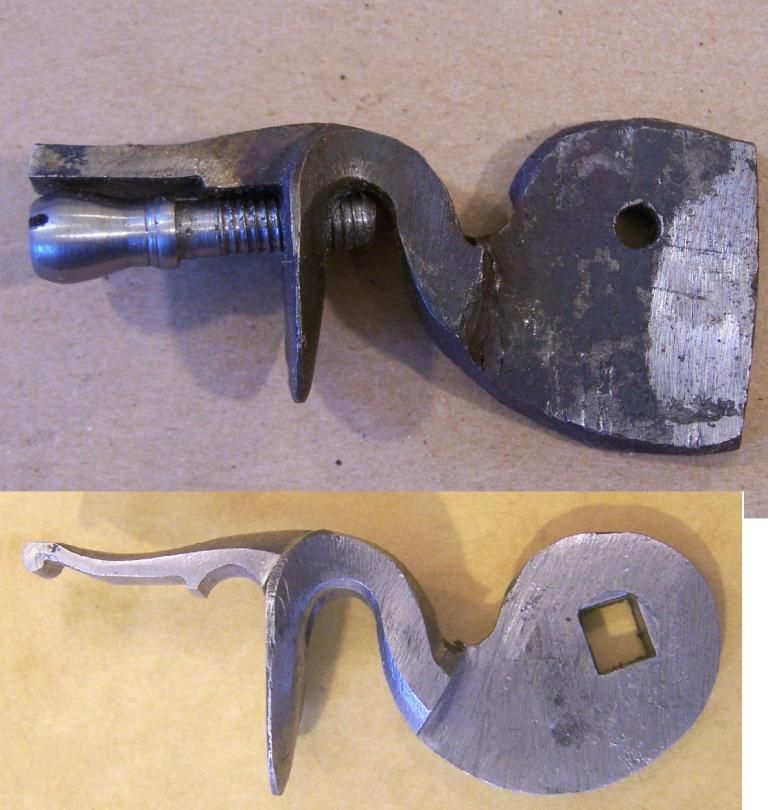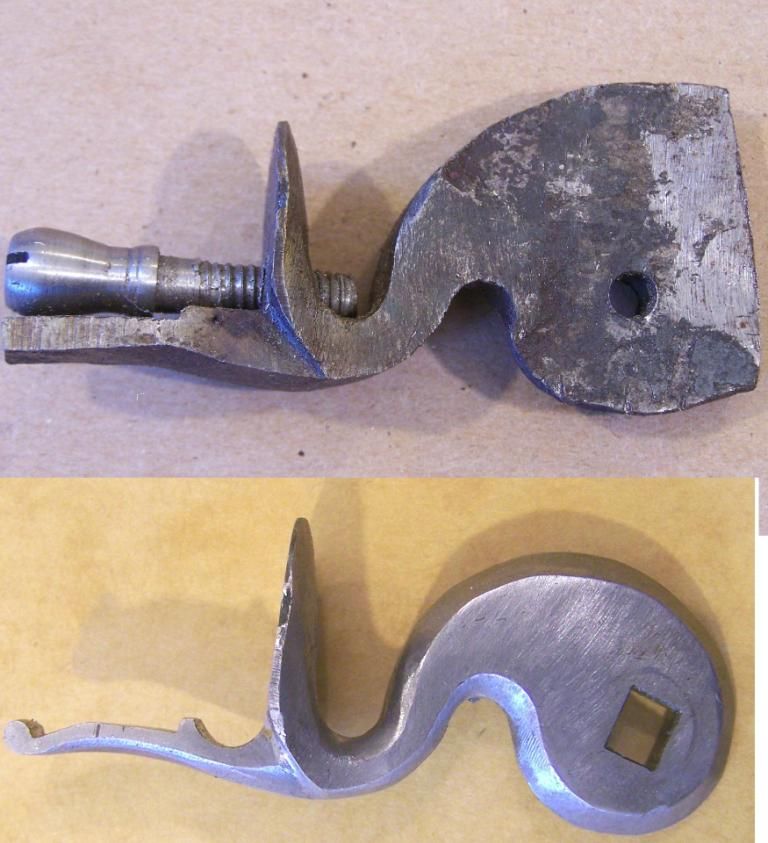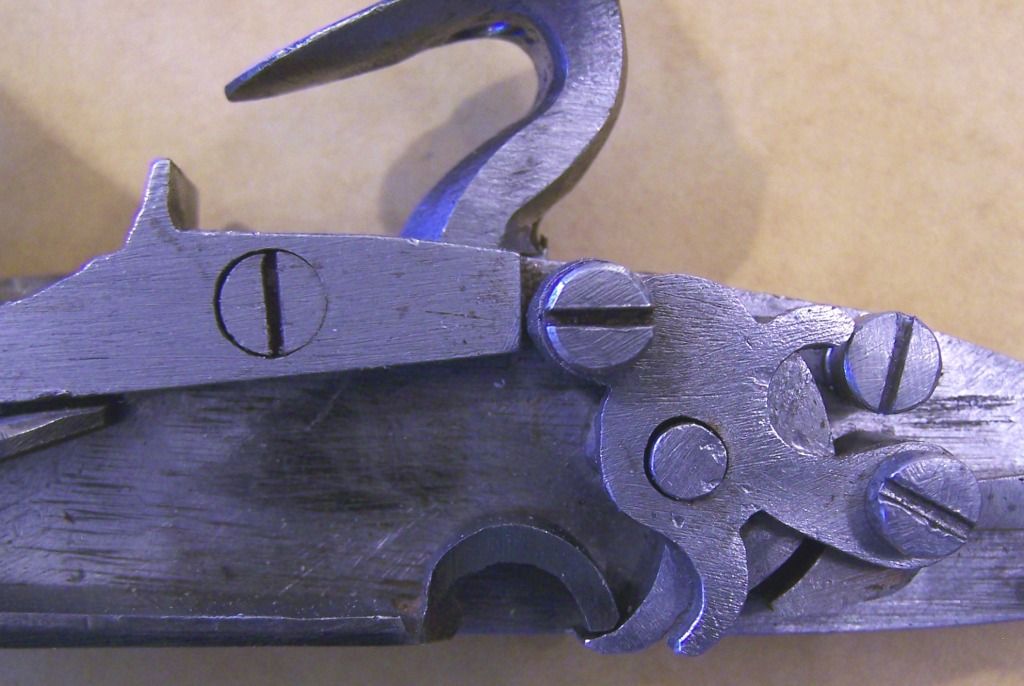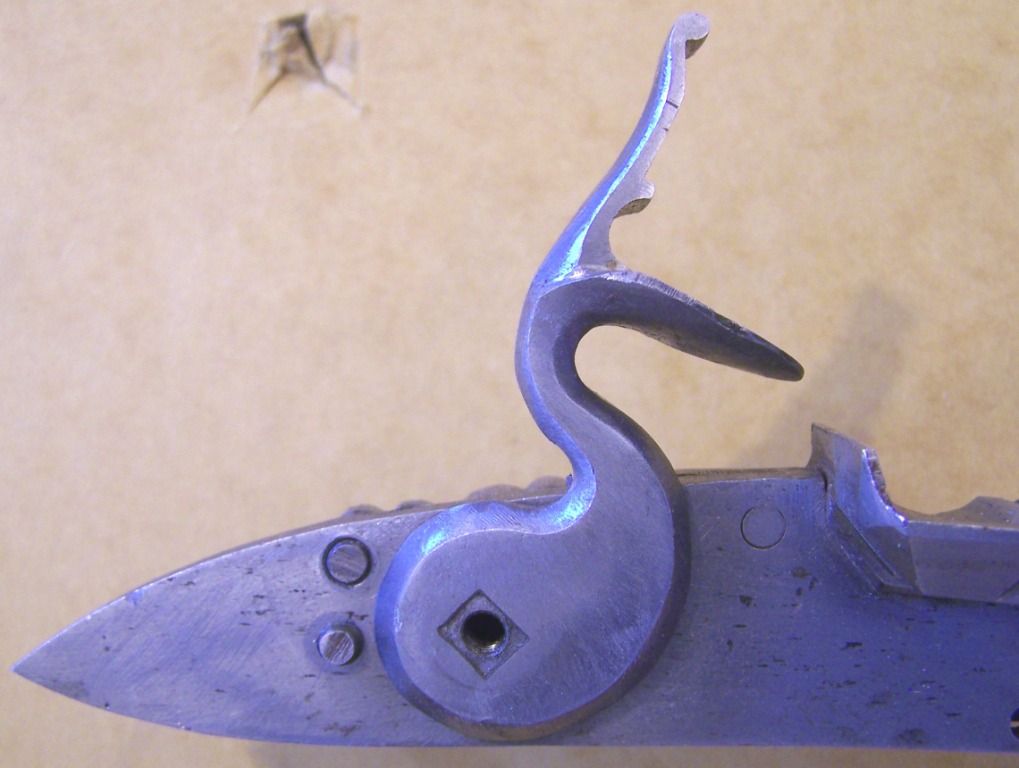Guys,
Here is a short summary on how to get the cock properly positioned. Positioning the tumbler lip, tumbler square, cock shoulder and cock position all at the same time it can be like juggling 4 balls in the air. First here is a photo of the before & after of the forged wrought iron cock, notice that I drill the pivot hole in the proper location to set the throw length, then file the metal to center around the existing hole.


I do not finish the cock interior shoulder, the one that hits the top of the lock plate, until the very end. I install the cock on the tumbler square at my best guess of the proper orientation, but since the cock shoulder is unfinished the installed cock would sit at about the half cock position Then I gradually file the shoulder back until the cock rotates to a proper hammer down position. With the mainspring in palce I allow the cock to rotate forward until the toe of the mainspring is just at the end of travel on the tumbler lip. In the case of this lock the mainspring to tumbler position is good, but the cock is still slightly far back from the pan. However, this would not effect lock operation. I never have done anything perfectly.


Bottom line - when you forge a cock, leave the cock interior shoulder way too big, then file it back until everything is happy.
Jim

